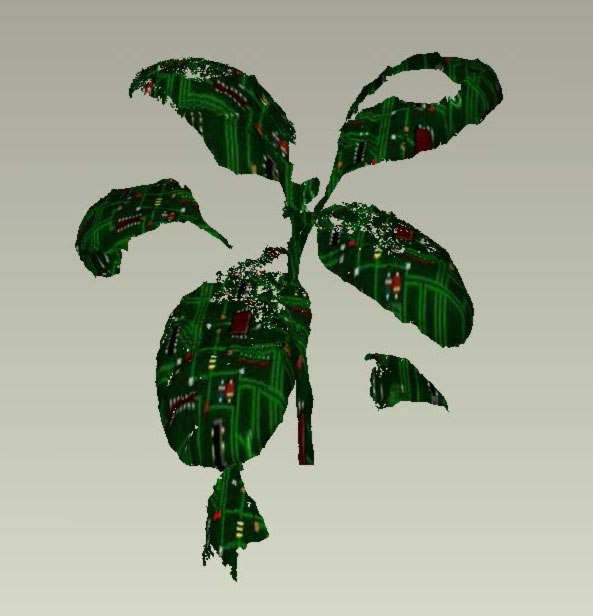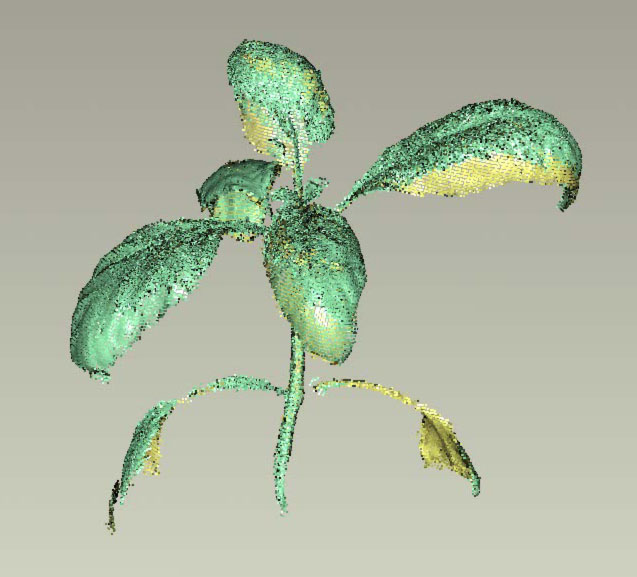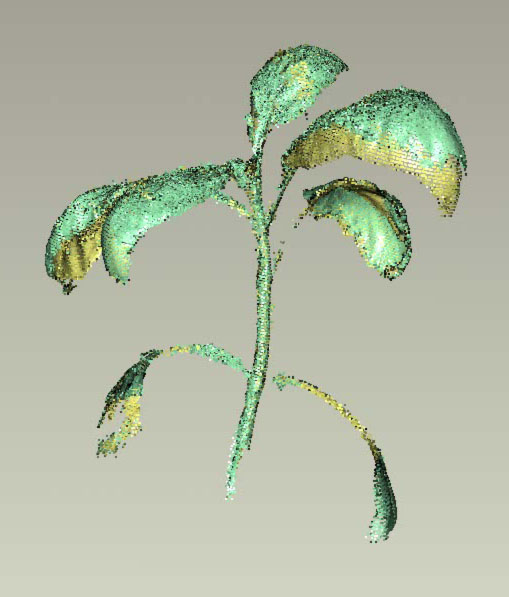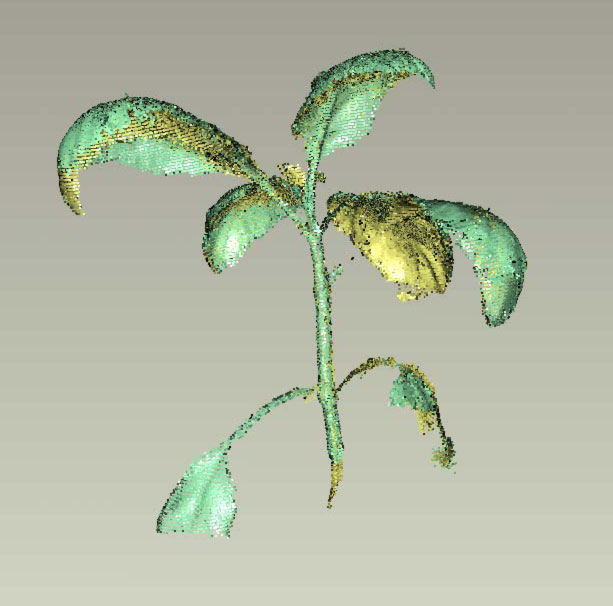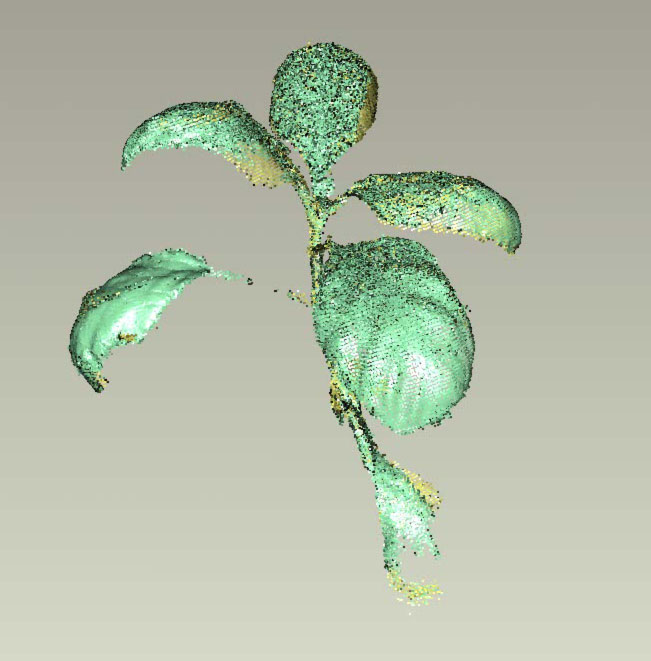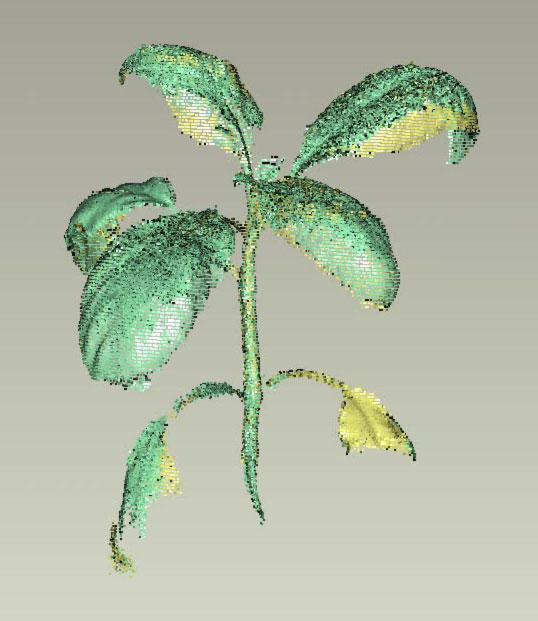 The first scan I did was in attempt to better image this honored plant - particularly I was hoping that the thin hairs that grow from the leaves surface will be picked up by the high-res scanning laser. No such luck, it seems. I was barely able to to get a complete leaf in any single scan. I ended up using the side scanner in Matthew's Center, and the table-top scanner in PRiSM's main lab to get different shots of the data within an hour of each other. Though this gave me a complete image, the plant's leaves grew within that hour; two bending in a single direction and another physically changing its shape. The result was that in order to complete register the multiple scans I had to make several copies of the model and delete the mis-aligned points from each. This left me with three separate leaves and the rest of the plant. I then took all of these models and registered them, yielding in a model that was as complete as I could get it from my data. It still has many missing faces, and the yellow parts show in the picture to the right. Still, It is the first 3D model I have ever seen of this rare plant.
The first scan I did was in attempt to better image this honored plant - particularly I was hoping that the thin hairs that grow from the leaves surface will be picked up by the high-res scanning laser. No such luck, it seems. I was barely able to to get a complete leaf in any single scan. I ended up using the side scanner in Matthew's Center, and the table-top scanner in PRiSM's main lab to get different shots of the data within an hour of each other. Though this gave me a complete image, the plant's leaves grew within that hour; two bending in a single direction and another physically changing its shape. The result was that in order to complete register the multiple scans I had to make several copies of the model and delete the mis-aligned points from each. This left me with three separate leaves and the rest of the plant. I then took all of these models and registered them, yielding in a model that was as complete as I could get it from my data. It still has many missing faces, and the yellow parts show in the picture to the right. Still, It is the first 3D model I have ever seen of this rare plant.
I was amused when I accidentally clicked on "texture" in the modeling program I was using, Raindrop Geomagic, and the plant was covered in a circuit-board design. It is somewhat humorous and poignant, as the ethnobotanical usage of this plant is as a connector and thinking machine (i.e. the world and calendrical cycles are seen through it).
